In this article, we’re going to embark on an intriguing comparison, examining the long-term finish quality of two renowned motorcycle brands: Triumph and Royal Enfield. We’re going to answer the question: How well does Royal Enfield’s finish quality last compared to Triumph’s?
We’ll be looking over the Royal Enfield and the Triumph for rust, pitting, weeping gaskets, and other indicators of a poor quality finish, and seeing how the two motorcycles have been holding up against the test of time.
Ultimately, the choice between a Royal Enfield and a Triumph is a personal one, dependent on your preferences, budget, and riding needs. Both brands have their strengths, and while the Triumph may come at a slightly higher cost, its long-term finish quality speaks for itself.
If you want to witness the visual evidence firsthand, I highly recommend watching the video embedded in this article.


A while back, I released a video expressing my reservations about recommending Royal Enfield motorcycles at that time. The response was intense, with some viewers even resorting to death threats. My message was either lost or ignored in the chaos, so I’ll state it again clearly:
A great motorcycle isn’t a motorcycle that’s great when it’s brand new. Any manufacturer can do that. A great motorcycle is a motorcycle that five years later, or ten years later, is still a great motorcycle.
While both Triumph and Royal Enfield have both created some very fun motorcycles. Let’s take a look at whether they’ve been able to create really great motorcycles, which can survive the test of time.
To put these two iconic brands to the test, I’ve brought a Royal Enfield Classic 500 and a Triumph Bonneville out for comparison. Keen motorcyclists will point out that the two come at different price points. The Bonneville is more expensive, so it’s fair to say that the fit and finish on the Bonneville should be better from factory, right? But how much better should the Bonneville quality be? How much of an advantage would the Royal Enfield need to be able to be as good, or better, than the Triumph?
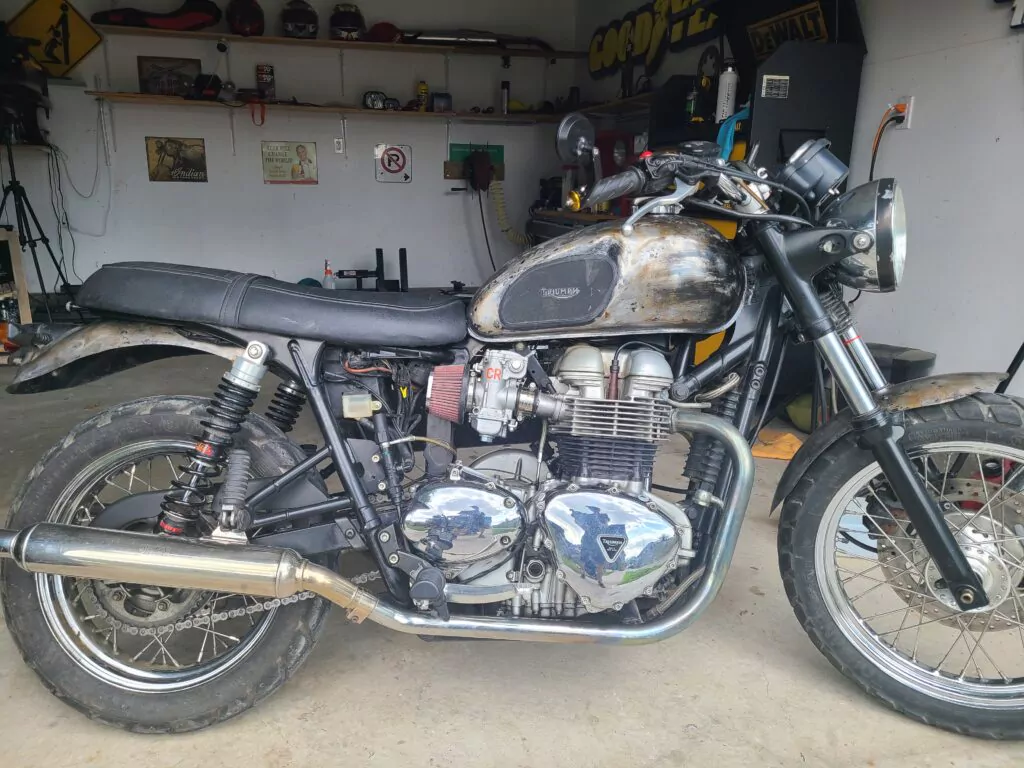
So for this comparison our test subjects have three main differences, to try to even the fight. The Royal Enfield has an advantage in storage, mileage, and age.
Storage: The Royal Enfield was stored in a climate controlled underground condo parking lot for the last decade. The Triumph was only stored in an uninsulated home garage.
Mileage: The Royal Enfield has only just over 7,000 km (a bit over 4,000 miles). The Triumph has over 38,000 km (about 24,000 miles).
Age: The Royal Enfield is only just over 10 years old. The Triumph is over 20 years old.
For the sake of comparing finish quality over time, we’ve definitely given the Enfield, on paper, a lot of advantages.
Side by side comparison: Royal Enfield versus Triumph
Let’s dive into the details. Starting with the chrome finishes around the headlights. Both motorcycles could use some cleaning, and shining, but the Royal Enfield’s looks better over. This is because the Triumph has seen five times more road use, and lived out in the country. It has some pitting in one corner which has started to turn to rusting. At only 7,000 km (4,000 miles) of mostly inner city use, the Enfield’s chrome headlight bezel is still untouched, with not even a dead bug on it.
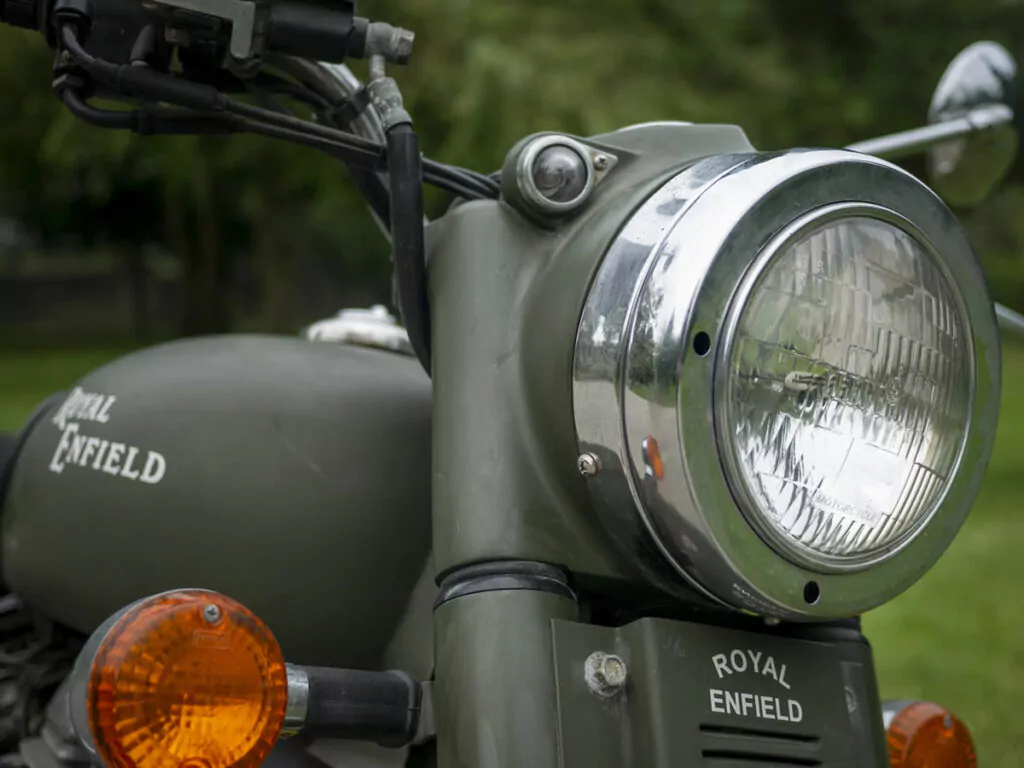
Moving on to the rims and spokes, the Triumph displays its superior build quality with spokes that show no pitting or rust, despite the extensive mileage. However, the Enfield’s spokes reveal signs of rust, and the overall condition of the rims leaves much to be desired. Triumph’s rims have “MADE IN ITALY” stamped in them, and the quality shines through.
Now, let’s explore the motor casing. After only 10 years of use, the Enfield’s casing displays surface rust and pitting, which is somewhat concerning. Meanwhile, the Triumph’s motor casing is a sight to behold, with clean welds and absolutely no signs of rust or wear, other than the scratch from an owner’s accident. But we can’t blame the motorcycle for that.
Next up are the exhaust pipes. The original OEM exhaust on the Enfield has already undergone significant discoloration after a mere 7,000 kilometers. Unfortunately, we can’t make a direct comparison with the Triumph as it no longer sports its original pipe.
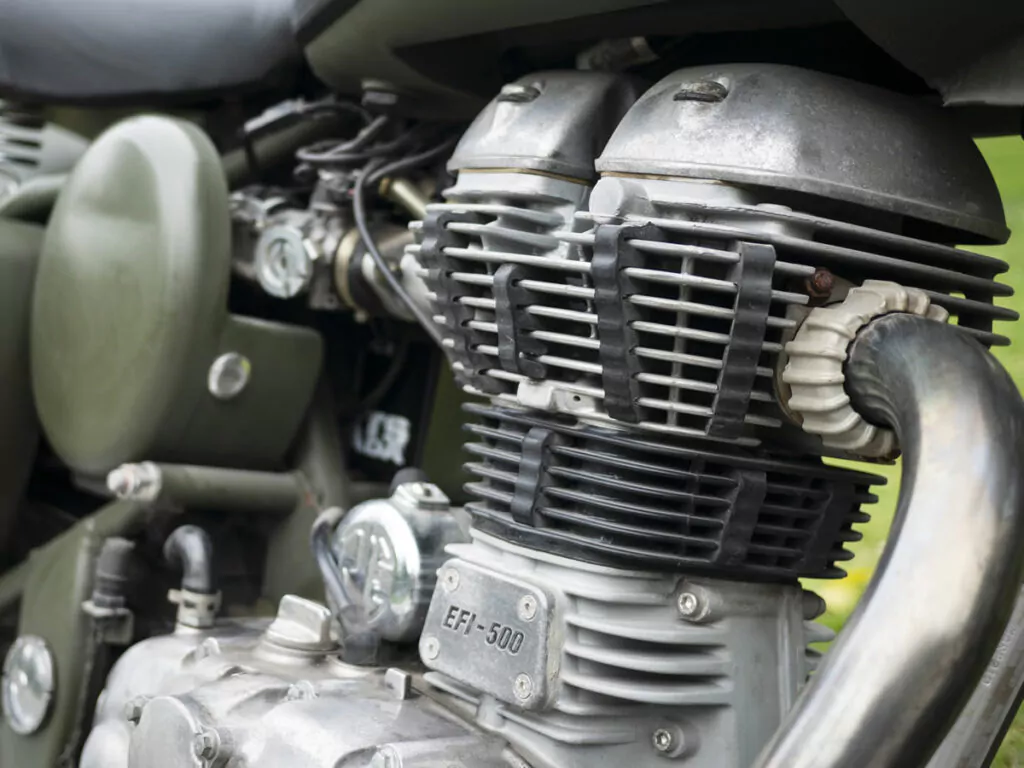
Moving on to gasket sealer, things take a turn for the worse with the Enfield. The sealer looks messy and poorly executed, raising questions about the bike’s overall build quality. Conversely, the Triumph boasts impeccable craftsmanship with clean finishes. There is no seepage, the gaskets are in like new condition despite the decades and tens of thousands of miles.
Finally, we take a close look at the frame. The Triumph’s welds and overall build quality are a testament to the brand’s commitment to excellence, showing no signs of rust or degradation. While the Enfield’s frame itself is in acceptable condition, various parts attached to it, such as hardware, demonstrate signs of rust and pitting.
So who has the better quality finish, Triumph or Royal Enfield?
This comparison speaks volumes about the long-term finish quality of these two iconic brands. Despite the initial price difference, the Triumph triumphs (pun intended) with its exceptional long-term durability and finish quality. But don’t just take my word for it; I urge you to watch the video for yourself to see the undeniable differences between the two bikes.
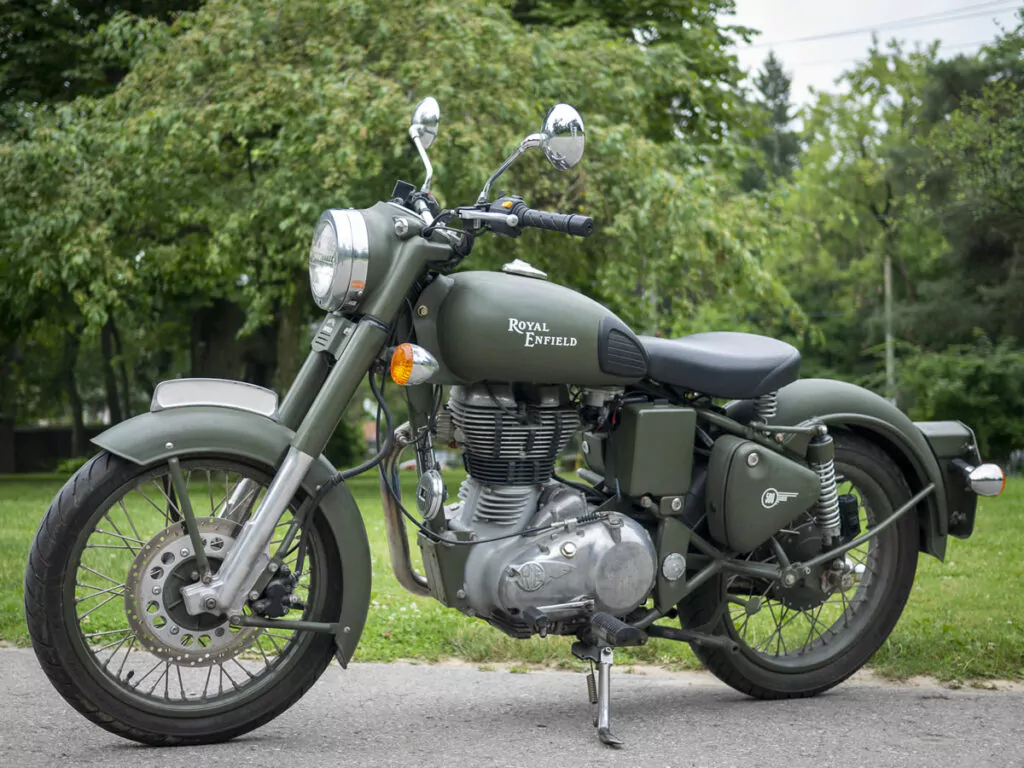
Remember, this comparison is based on just one Royal Enfield and one Triumph. There are certainly millions of other examples. I picked these two particular units to compare because both had long term owners who stored them indoors. That makes for a great comparison and provides valuable insight into what to expect from these motorcycles after years of ownership.
Ultimately, the choice between a Royal Enfield and a Triumph is a personal one, dependent on your preferences, budget, and riding needs. Both brands have their strengths, and while the Triumph may come at a slightly higher cost, its long-term finish quality speaks for itself.
So, if you’re looking for a motorcycle that will continue to impress even after years of adventures, I encourage you to consider the Triumph. Even a used one in good shape will probably hold up much better than a new Royal Enfield. Whichever bike you choose, regular maintenance, care, and proper storage are crucial to preserve its appearance and performance.
Thank you for taking the time to read this article, and I hope it helps you in making an informed decision. Please feel free to leave a question or comment in the comments section below.
 YouMotorcycle Motorcycle Blog – Motorcycle Lifestyle Blog, MotoVlog, Motorcycle Reviews, News, & How-Tos
YouMotorcycle Motorcycle Blog – Motorcycle Lifestyle Blog, MotoVlog, Motorcycle Reviews, News, & How-Tos
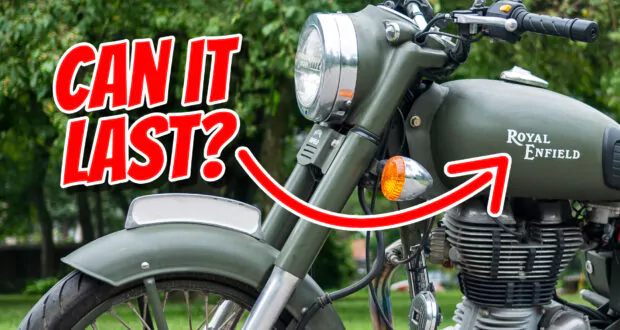
Yo, gotta ask, is the new Triumph holding up like the OG ones from two decades back? Wondering if they’re still slinging that top-notch quality they used to roll with back in the day.
I would say yes, absolutely. The T100 Bonnevilles are made in Thailand, but honestly, the quality is still top notch.
I was all pumped up to RE but man, when I peeped some I saw on FB Marketplace and cruising around, my whole vibe took a nosedive. Checked out this RE650, supposed to be all upgraded and stuff, but bam, rust city down here! That view got twisted real quick.
Was the uninsulated garage in Phoenix or Fairbanks?
Both were in Toronto.